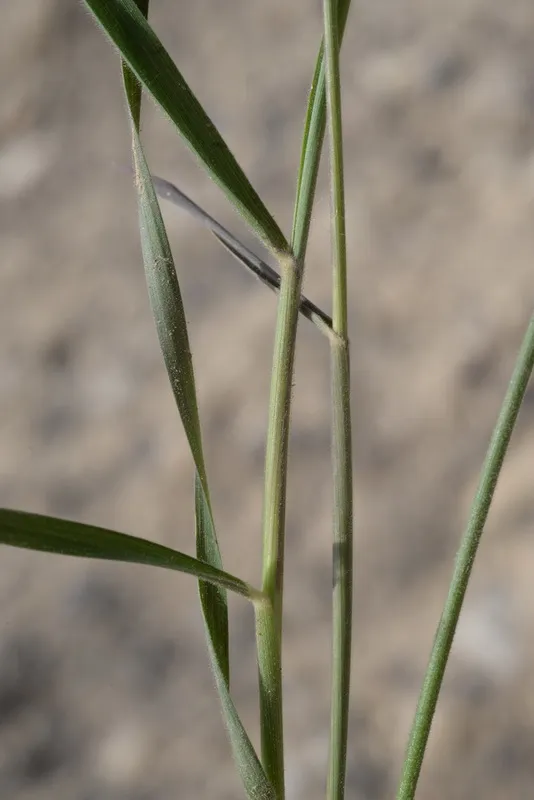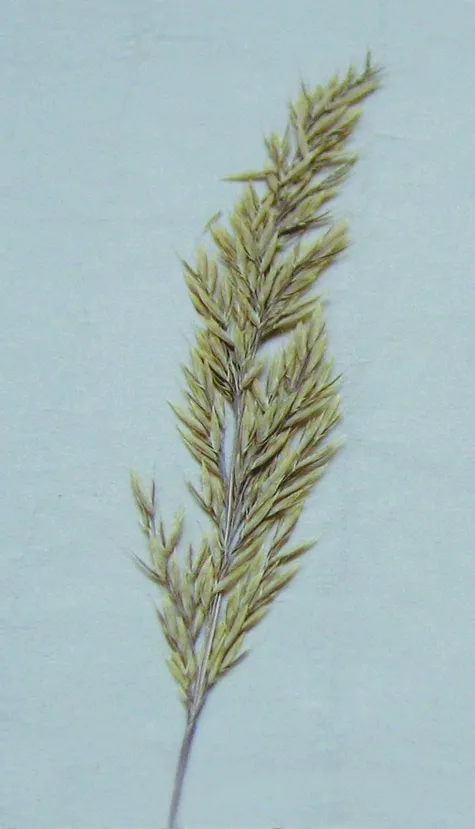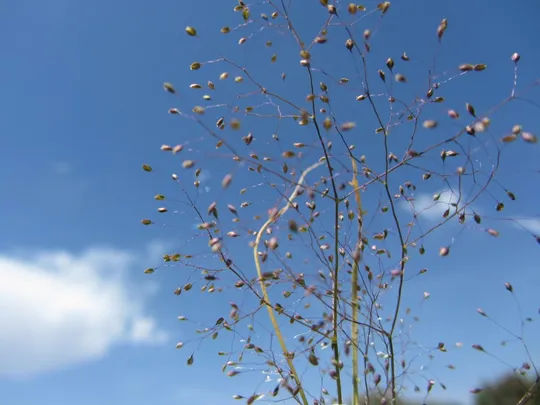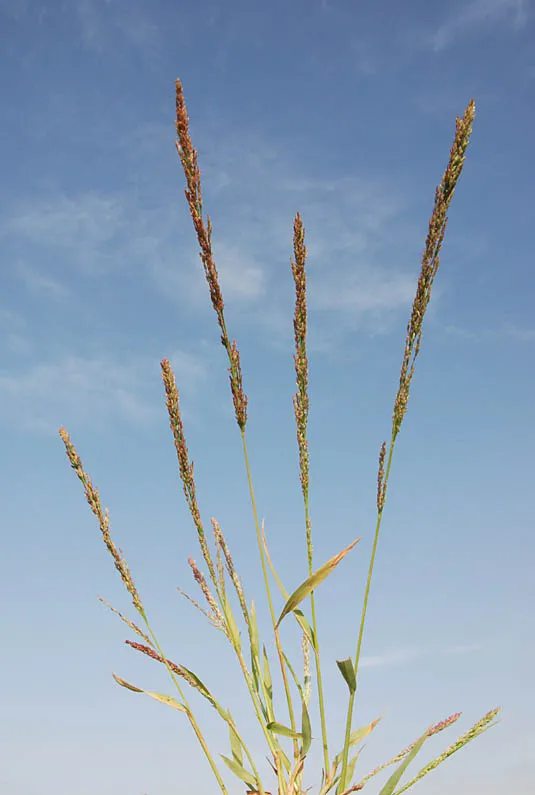Nineawn Pappusgrass
Enneapogon desvauxii
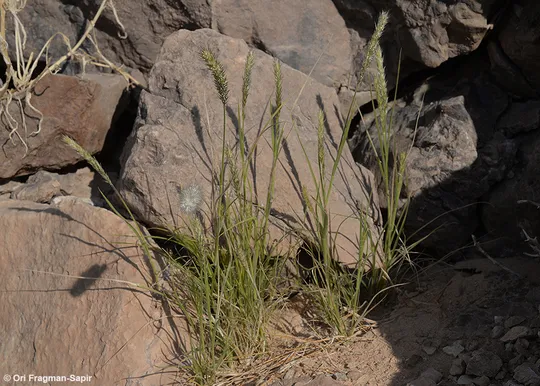
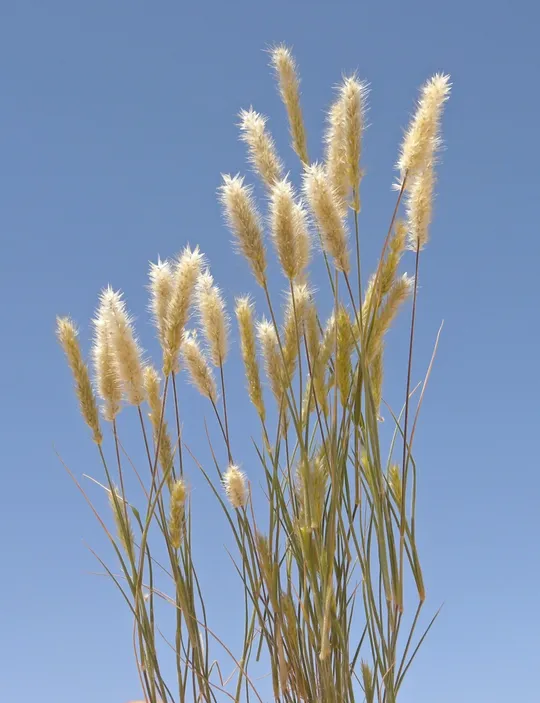
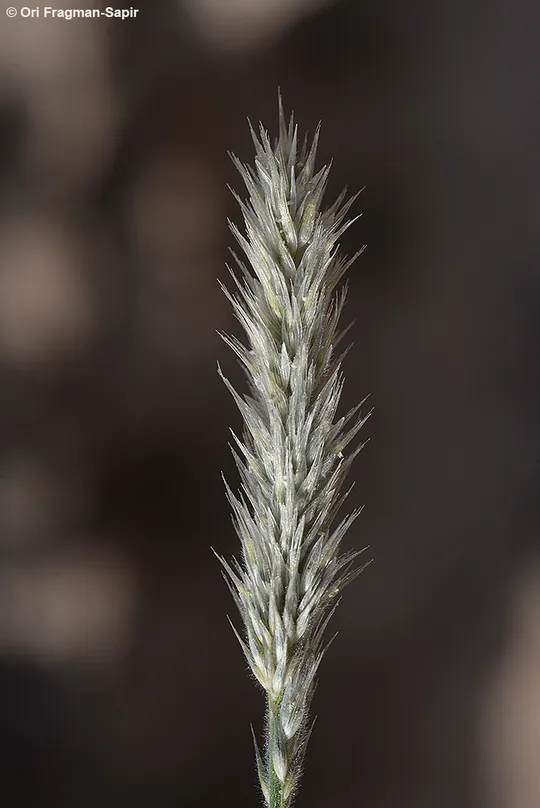
Enneapogon desvauxii grows in two regions in Israel, on nine sites: the Elat
Mountains (eight sites) and the Dead Sea (one site). In the Elat Mountains it
was collected and observed at Wadi Timna, Wadi Nimra, near Mount Shhoret, Mount Tsfahot, Wadi Gar’init near the Elat Field School, on Mount Shahmon
south of the Coral Beach and in Wadi Gishron. In the Dead Sea region, it is found
near the Madin Ruins (Mezin).
In Israel Enneapogon desvauxii grows in the extreme, very arid desert, on rocky slopes and in sandy
areas. In the world, it grows in a great variety of habitats, from desert areas
to cold deserts, savannas, tropical and sub-tropical rainy areas and others.
The genus Enneapogon contains about 40 species found
mainly in Africa and Australia. Two species grow in Israel. E. persicus, which is also a red plant
(see the entry in this book), has larger purple inflorescences.
·
All available information on the
distribution sites in Israel is based on data obtained in the 1960s and
onwards, consequently there is not enough information to determine trends and
changes compared to previous periods. In recent years, there have been dry
years when the plant did not appear at all, even on well-known sites, making it
difficult to evaluate long-term changes.
·
Individual E. desvauxii plants
apparently survive on stony soil for a few years, during which they produce
seeds. Following a drought period of several consecutive years, the older
plants dry up and die. During a lengthy continuous period of dry years, the
plants do not appear at all at the sites, as happened in 2002-2009. The plants found during a rainy year
following a number of years of drought are apparently shoots that developed
from seeds. Only once in 7-10 years is there sufficient rainfall for blooming,
for germination and for the creation of a new seed reserve that allows the
plant and its populations to survive.
·
The Elat sites are located near areas
that are under development. Elat's urban sprawl, the spread of tourist
development to the Elat Mountains and the increasing all-terrain vehicle
traffic threaten the natural condition of the sites. The drying and warming
trend observed in extreme desert areas and the lengthening of drought periods
and their increased duration may lead to depletion of the seed bank and
possibly to local extinctions of populations.
·
The sites in the Elat area are located
in the proposed (but not declared) Massif Elat Reserve.
·
E. desvauxii has a broad geographical
distribution and is not globally endangered.
A detailed survey
of the Elat Mountains should be conducted during rainy years. Selected
populations of Enneapogon
desvauxii should be
subject to long-term monitoring in order to assess their
current situation and to formulate a monitoring or management program.
Enneapogon desvauxii has a broad global distribution: the
Canary Islands, the entire African continent and the entire Asian continent
with the exception of its northern part. It is also found in the southwest
United States, Mexico and southwards to Argentina.
Enneapogon desvauxii is a perennial grass
that grows in the extreme desert mainly in the area of Elat. The number of its
sites is extremely small and most are located in areas that are being
encroached on by development for tourism. The E. desvauxii populations in
Israeli are peripheral and are located at the northern limit of their
geographical distribution. The species is not globally endangered.
Current Occupancy Map
| 1000 squre meter pixel | 5000 squre meter pixel | 10000 squre meter pixel | |
|---|---|---|---|
| number of observations | 0 | 0 | 0 |
| in total pixels | 0 | 0 | 0 |
| Family | Gramineae |
| Classification | On the near threatened species list |
| Ecosystem | Desert |
| Chorotype | Eastern Sudanian |
| Conservation Site | Mount Tsfahot and Wadi Gar’init in the Elat Mountains |
| Rarity |
1
3
6
|
|---|---|
| Vulnerability |
0
1
4
|
| Attractiveness |
0
0
4
|
| Endemism |
0
0
4
|
| Red number |
1
2.6
10
|
| Peripherality | S |
| IUCN category | DD EW EX LC CR EN VU NT |
| Threat Definition according to the red book | Near threatened |
 Based on:
Based on:
